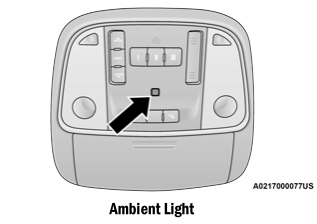Dodge Charger: DODGE DRIVE MODES — IF EQUIPPED / Performance Control — If Equipped
Your vehicle may be equipped with a Performance Control feature which allows for coordinating the operation of various vehicle systems depending upon the type of driving behavior desired. The Performance Control feature is controlled through the Uconnect system and may be accessed by performing any of the following:
- Pushing the Super Track Pack button on the instrument panel switch bank.
- Selecting “Performance Control” from the “Apps” menu.
- Selecting “Performance Control” from within the Performance Pages menu.
You will be able to enable, disable, and customize the functionality of the Launch Control and Performance Control Set-Up features within Performance Control.
Descriptions of these features are provided below. To access information about the functionality of these features through the Uconnect system, press the Info button on the touchscreen.
NOTE:
Dodge vehicles equipped with a 6.4L engine, except for R/T Scat Pack 1320 6.4L non-wide- body vehicles, will use SRT Drive Modes rather than the Dodge Performance Control Pages. Please refer to the following sections for further information on the SRT Drive Modes.
 Drive Mode Set-Up
Drive Mode Set-Up
Pressing the Drive Mode Set-Up button on the touchscreen within the Performance
Control screen indicates the real-time status of the various systems...
Other information:
Dodge Charger 2011-2025 Owner's Manual: Power Window Controls
The window controls on the driver's door control all the door windows. The passenger door windows can also be operated by using the single window controls on the passenger door trim panel. The window controls will operate only when the ignition is in the ACC or ON/RUN position...
Dodge Charger 2011-2025 Owner's Manual: PUBLICATION ORDER FORMS
To order the following manuals, you may use either the website or the phone numbers listed below. Service Manuals These comprehensive Service Manuals provide a complete working knowledge of the vehicle, system, and/or components and is written in straightforward language with illustrations, diagrams, and charts...
Categories
- Manuals Home
- Dodge Charger Owners Manual
- Dodge Charger Service Manual
- To Lock/Unlock The Doors And Trunk
- How To Use Remote Start
- USB/AUX Control
- New on site
- Most important about car
Ambient Light — If Equipped
The overhead console is equipped with an ambient light feature. This light illuminates for improved visibility of the floor and center console area.


